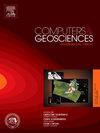A dual watermarking algorithm for trajectory data based on robust watermarking and fragile watermarking
Abstract
Digital watermarking technology plays a crucial role in securing trajectory data. However, as trajectory data usage scenarios continue to expand, the security requirements for it have changed from a single copyright protection to one that takes into account data integrity. Existing digital watermarking algorithms for trajectory data can only choose between implementing copyright protection or ensuring integrity, unable to simultaneously achieve both functionalities. This limitation impedes the sharing and utilization of trajectory data. A dual watermarking algorithm that combines robust and fragile watermarking was innovatively proposed to solve this problem based on the geometric domain. Firstly, a set of feature points is extracted from the trajectory, and the farthest point pair of the minimum convex hull of the feature points is set as fixed points. The robust watermark is then embedded in the angles constructed by the feature points and the fixed points using quantization index modulation. Meanwhile, the trajectory points are grouped based on the angle and distance ratio constructed from the trajectory points to the fixed points. In each group, the spatiotemporal attributes of the trajectory points are mapped to the fragile watermark, which is then embedded into the distance ratios constructed by the trajectory points. Experimental results show that the proposed algorithm achieves both copyright protection and integrity verification for trajectory data and exhibits stronger robustness and tampering localization ability. This research can provide security and privacy protection for trajectory data and contribute positively to the application of trajectory data.

 求助内容:
求助内容: 应助结果提醒方式:
应助结果提醒方式:


